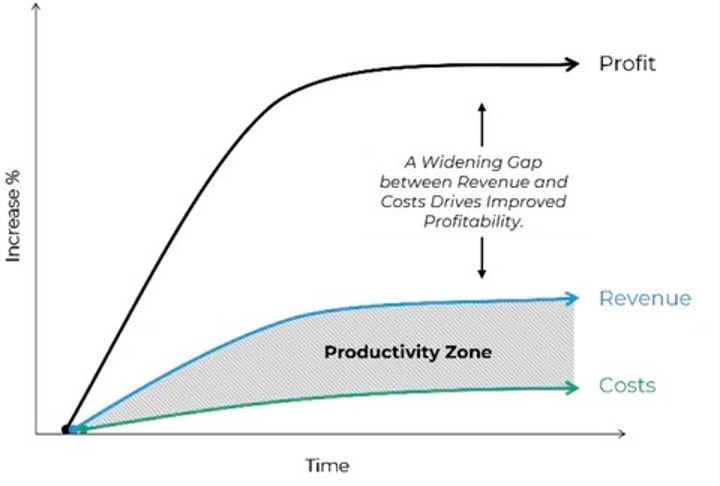Private equity's expanding role in the Architecture, Engineering, and Construction (AEC) industry marks one of the most significant developments reshaping the sector today. Driven by attractive returns, strategic growth potential, and a historically fragmented market ripe for consolidation, private equity firms are increasingly seeing the AEC industry as fertile ground for strategic investments.
Why Private Equity is Investing in the AEC Industry
One of the key factors attracting private equity investors to the AEC sector is its resilience and robust growth potential, particularly amid increased infrastructure spending and urban development. With substantial government funding allocated to infrastructure and sustainability initiatives, private equity firms are seizing the opportunity to acquire AEC firms that are well-positioned to benefit from these long-term trends.
Leveraging Technology for Productivity and Profitability
A pivotal driver behind this growing interest is the potential for significant returns through operational improvements, scalability, and strategic consolidations. Technology plays a crucial role, acting as both a catalyst and enabler for productivity enhancements, making technology integration a central strategy post-acquisition.
Technology, especially project-based Enterprise Resource Planning (ERP) systems and purpose-built technical report management tools for client deliverables, are at the heart of this transformation. Project-based ERP solutions streamline operations by providing real-time visibility into projects, finances, resources, and timelines, significantly enhancing productivity and reducing operational inefficiencies. Quire's Technical Report Management™ platform further enhances this synergy by integrating seamlessly with ERP systems, enabling real-time synchronization of project data. This integration reduces manual data entry, minimizes errors, and ensures consistency across projects-key factors in driving profitability and operational excellence. By eliminating data silos, AEC firms can enhance decision-making, improve efficiency, and ensure consistency across projects, ultimately driving profitability and operational excellence. These systems enable AEC firms to manage more resources effectively, reduce costs, and boost overall profitability-key aspects of value creation sought by private equity investors.
Importance of Technical Report Management in M&A
Technical report management tools, like Quire, have also become increasingly essential in the AEC industry's M&A landscape, driving synergies and improving post-acquisition integration. According to Zweig Group's Q3 2024 M&A report, efficient management and standardization of technical reports can significantly enhance profitability, scalability, and collaboration during mergers and acquisitions.
Technical report management systems provide consistent standardized templates and processes that streamline report creation, reduce errors, and facilitate seamless integration of newly acquired firms. By ensuring consistency across merged entities, private equity firms can achieve synergies more quickly, minimizing disruptions and accelerating post-merger integration. Additionally, these tools encourage collaboration, enabling teams from different backgrounds and corporate cultures to align more efficiently around unified business practices and project delivery standards.
The financial benefits of adopting sophisticated technical report management solutions are substantial. In a recent article published on Zweig Group, it is noted that improved technical documentation processes can directly contribute to higher profit margins by reducing rework, lowering project risks, and shortening project cycles. Furthermore, automating and standardizing document creation allows AEC firms to scale. With the added productivity gained by using a technical report management platform, firms can attack their backlog and take on more work to grow their top line more rapidly.

Market Trends in AEC Mergers and Acquisitions
The pace of AEC mergers and acquisitions (M&A) has accelerated through Q4 2024 into early 2025, driven notably by increased private equity activity, significant infrastructure investments, and strategic consolidations. Private equity now accounts for approximately 40% of all transactions, reflecting its ongoing strategy to consolidate and diversify service offerings. The substantial infrastructure funding injected into the industry has further fueled acquisition interest, especially for firms specializing in civil and environmental engineering. Geographically, Texas, California, and Florida have dominated M&A activity. This strong momentum continues into early 2025, with 35 announced transactions in January alone. Analysts project sustained growth throughout the year, as private equity firms continue to drive strategic realignment within the sector.
Challenges and Opportunities in Private Equity Ownership
Despite these advantages, the transition to private equity ownership presents challenges for many AEC firms. The increased focus on profitability and productivity demands a cultural shift and adoption of rigorous business processes. Firms accustomed to operating independently must now integrate quickly and adapt to standardized processes imposed by new ownership. However, these challenges also present opportunities for innovation and modernization. Firms that embrace change and leverage technology to enhance their operations will be well-positioned to thrive in an increasingly competitive landscape.
Aligning Technology Investments with Strategic Goals
Strategically, private equity-backed AEC firms are uniquely positioned to capitalize on technological innovation, leveraging digital solutions like AI-driven analytics, advanced project management platforms, and integrated reporting systems. Firms that successfully align technology investments with their strategic business objectives will gain a significant competitive edge, positioning themselves for further acquisitions or strategic exits.
Future Outlook: Technology as a Growth Catalyst
Looking ahead, technology will continue to be a critical driver of growth and consolidation in the AEC industry. As firms increasingly adopt innovative solutions to enhance operational efficiency and project delivery, private equity investments will likely intensify, driven by the compelling returns that technology-driven AEC firms offer.
Integrating advanced technical report management systems is crucial for AEC firms aiming to enhance operational efficiency and profitability, especially in the context of mergers and acquisitions. Quire's Technical Report Management™ (TRM™) platform exemplifies such innovation, offering a comprehensive solution that streamlines the entire report development-to-delivery process. By automating workflows, enhancing collaboration, and providing real-time analytics, Quire TRM enables firms to produce higher-quality deliverables in less time, thereby boosting efficiency and margins.
Purpose-built platforms like Quire TRM address unique AEC challenges, from data collection to final delivery. By replacing general-purpose tools with an end-to-end system, top-performing firms transform report creation from a tedious, error-prone task into a streamlined, measurable process driving growth and profitability.
Ultimately, private equity's role in driving technological innovation will continue to reshape the sector, driving substantial returns and propelling firms toward sustainable growth and operational excellence.
For more information on technical report management, contact us.
